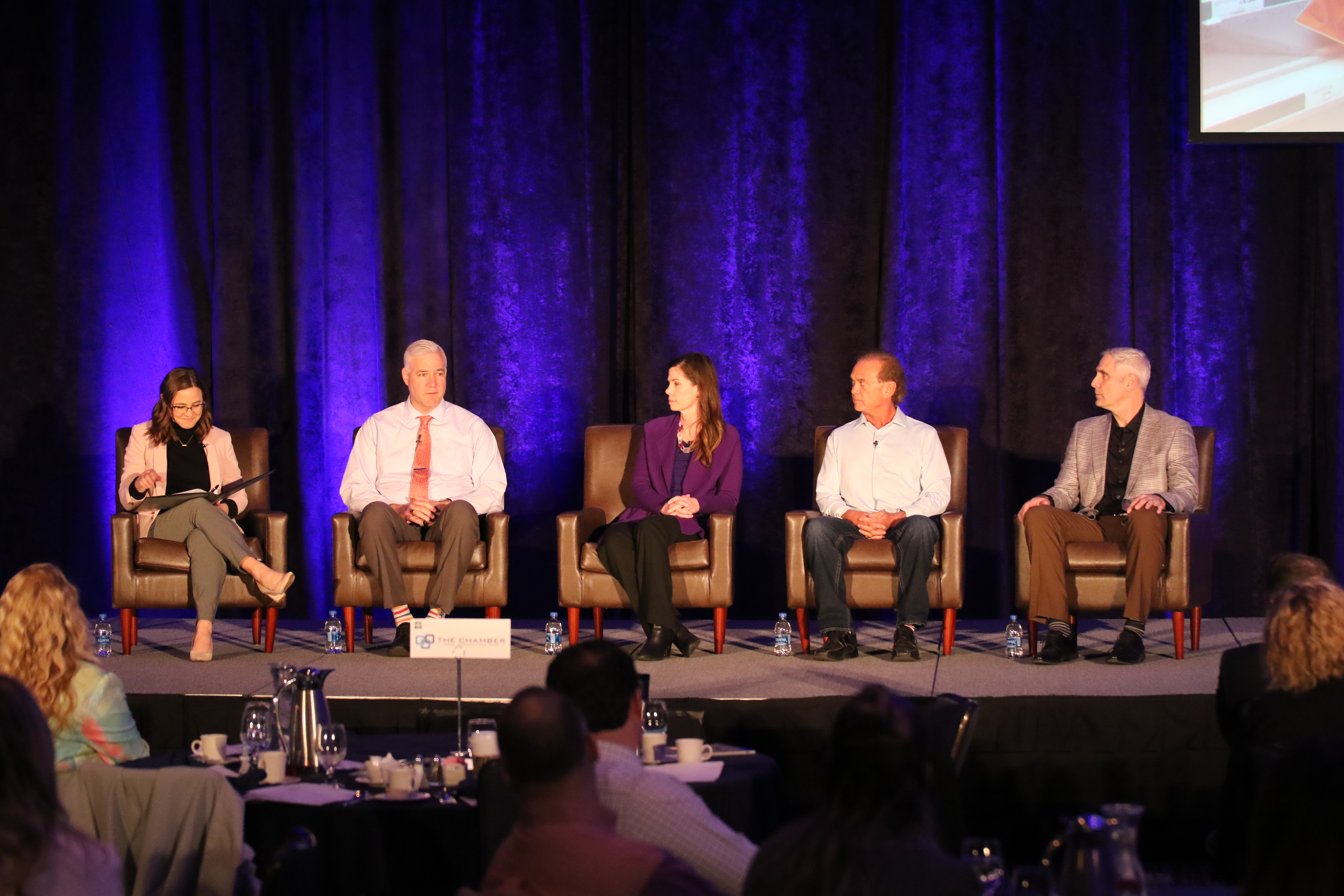-
Surviving the Supply Chain: A Recap of April Eggs & Issues
-
Surviving the Supply Chain: A Recap of April Eggs & Issues
Kayla KoehmstedtWednesday, April 13, 2022Walking into the store and seeing the prices rising and the shelves empty is none the least frustrating. On Tuesday, April 5, The Chamber hosted four business professionals to discuss the present supply chain issues that are not only directly affecting consumers, but also producers, transporters and sellers. During April’s Eggs and Issues: Empty Shelves and Rising Prices: Surviving the Supply Chain, Matt Leiseth, President of Hornbachers, Chris Barta, Director of Operations for Marvin Windows, Amy McBeth, Regional Director of Public Affairs for BNSF Railway Company, and Larry Bellerud, President of Bellerud Transport, provided different perspectives on the state of the supply chain. Overall, each of these business leaders recognized the same common challenges: lack of workers, lack of communication, and lack of space. The lack of employees in production warehouses, transportation and sales creates constant inefficiencies and bottlenecks throughout the supply chain process. The United States’ supply chain is lagging behind in technology and communication, causing wait times and dwell times. There's simply not enough space to manufacture and warehouse products to keep up with the increasing demand.
As an average consumer, it’s important to step back and recognize the supply chain issues that we face in the modern-day. It is a complex business. Consumers use products that are manufactured and imported from across the world. Before these products can make it to your home they have been either flown to the U.S. or brought in through ports; after products reach the U.S., they’ve been transported on semi-trailers and rail cars. Stores and retailers then have their own processes for organizing products to get them onto the shelves. Behind every product on the shelf, a variety of management, communication and labor has been involved to get that product there. There are several moving parts to the supply chain that are continuously moving to get products to the consumer.
Every part of the supply chain field recognizes the inefficiencies and logistics that need to be improved on. It’s important to recognize that throughout the supply chain these companies don’t just have to please the consumer, but they also have to keep up with the constant workforce demands, competition and inflation. Overall, the supply chain is a broad but tedious and detailed industry that’s composed of multiple members all trying to get products to the consumers.
Tell a Friend
-
A catalyst for growth and prosperity.


